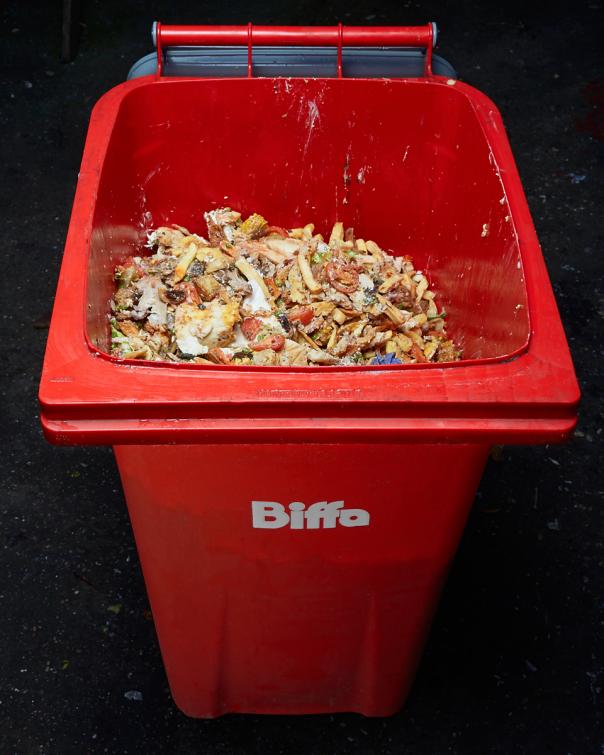
The cost-of-living crisis and the dramatic increases in food prices have meant that caterers, restaurants, and kitchen teams across the UK are urgently looking to save money and increase efficiencies.
Even before food prices spiralled - with year-on-year price increases in the key categories of meat, vegetables and fruit nearing 20%, WRAP research indicated 18% of the food purchased by the sector ends up in the bin. What’s more:
• 75% of binned food could have been eaten
• This edible food waste is estimated to cost £0.97 per restaurant cover, on average
• The average kilogram of food wasted is responsible for the equivalent of 3kg of carbon dioxide and other greenhouse gas emissions (CO2e)
The good news is that there are simple ways you and your team can feed people not bins. The power to change is in your hands, and the Guardians of Grub tools and resources are here to help you.
Get to know your hotspots
Understanding your business’s food waste ‘hotspots’ can help teams to understand exactly where (and then how) it happens. Each site is different, but common causes can include over-portioning (which can lead to food left on customer plates), and poor communication about diner numbers, which can lead to overproduction.
Logging food waste puts it firmly on the radar - your kitchen teams probably already have the insight to find the small tweaks to everyday practices that can dramatically reduce what’s being binned. And this saves the money associated with that wasted food. This comes from food procurement costs, as well as from the staff time, cooking, storage, transport and disposal costs related to that food. What the Guardians of Grub can provide is that extra helping hand in skilling up your team.
Elior, whose teams have used Guardians of Grub tools and training, found it galvanised change. “Our team found that just talking about wasted food influenced change and many of our sites put initiatives in place such as zero-waste dishes, utilising excess stock through menu innovations and donating surplus to the community.”
And the results quickly win over reluctant teams. Although initially sceptical about the impact of measuring their food waste, the kitchen team at the Harrington Arms in Cheshire recorded a 5%-6% increase in gross profit following a 33% reduction in food waste after they started using the Guardians of Grub tools.
Olive Catering saw food waste reduce by 38% at one site during the tracking period. The interventions introduced by staff after logging what was going in each bin even cut some waste streams out entirely. For example, making sandwiches to order rather than pre-preparing them reduced waste from this source to zero.
Getting cracking with tracking
The best way to identify your hotspots is by tracking your food waste. We recommend carrying out this food waste audit over a four-week period to begin with. And the free Guardians of Grub tools are on hand to help your teams get started:
• The Cost Savings Skills Course will teach you and your team the essentials on reducing wasted food in just 15 minutes
• The Becoming a Champion e-learning course is a brilliant deep-dive into all the ways you can make sure the food in your kitchens’ feeds people, not bins.
One of our Champions later said: “I found the programme very easy to follow and the food waste measurement tools were and are still very useful in helping the department to reduce food waste
“If you want to get your teams involved and find out the food waste facts so you can take action on the ground to reduce carbon impact, I would recommend signing your business up to the Guardians of Grub Becoming a Champion Programme.”
Understand your impacts
To get started, separate your food waste into plate, prep, spoilage and other, and get the team to log the daily total of each type on the tracking sheets (we recommend you print them off and pin them up by the bins).
At the end of the week, plug your data into our food waste tracking calculator, and after four weeks, it will tell you:
• How much food has been wasted each week and where your hotspots are
• How much its costing you – both in hard cash but also its CO2e impact
• How much money and CO2e you could save, e.g. by setting a 25%, 50% or 75% reduction target
• How tracking food waste has made a difference by showing you how much your food waste reduced between week 1 and week 4 of the food waste audit, and how much money and carbon this has saved.
This simple process will help you identify the impact of your team’s collective food saving changes. It will also help you to identify other hot spots and how they might be tackled, such as working with suppliers to reduce spoilage caused by pack sizes, or tweaking menus to reduce SKUs (stock keeping unit).
Taking action to save good food from being wasted can also be a morale boost, and can help with staff retention at a volatile time. Appointing a Champion in the team can also help keep everyone motivated and keep food saving front of mind.
Join the Guardians of Grub community
As you go on your journey, the Guardians of Grub are with you every step of the way, with a host of resources to inspire and support, including webinars, videos, case studies, guides and a cost-and-carbon saving calculator. Plus, there’s the opportunity to get involved in Food Waste Action Week – this year from March 6-12 - to show how much you love food and hate waste.
You can also join the #GuardiansOfGrub conversation on Facebook and Instagram to get updates on new resources.
And tag us to share your food saving tips and successes @GuardiansOfGrub, #GuardiansOfGrub #FeedPeopleNotBins. We can’t wait to share ideas and to hear how you’re getting on.